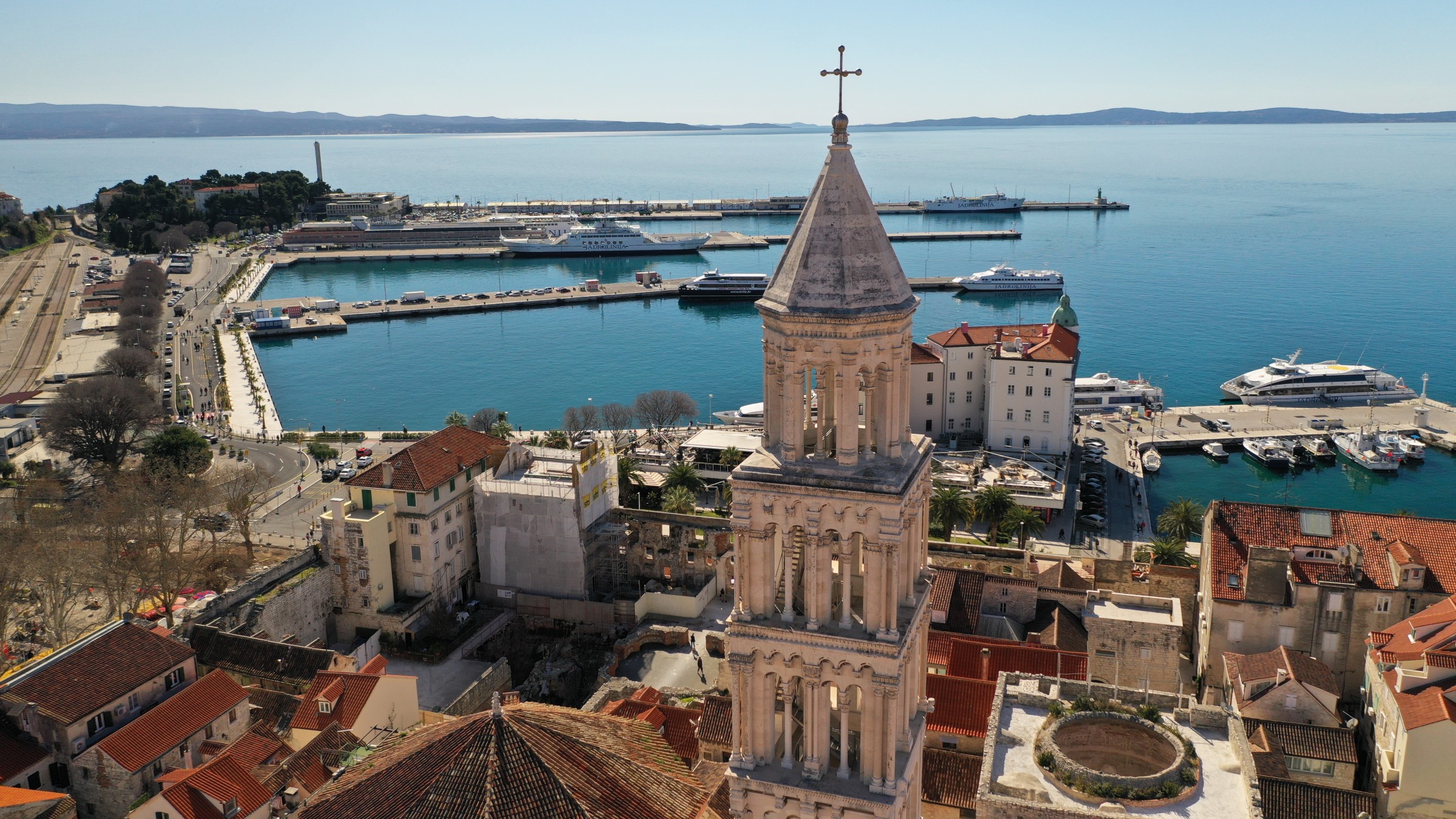30 June 2023
Our port pro of the month is Mr Vice Mihanović, Director of Port of Split Authority in Croatia. In what follows, you will read more about the passenger sector, port sustainability, significant investments, and more. Discover the other interesting topics our port pro of the month addressed below!
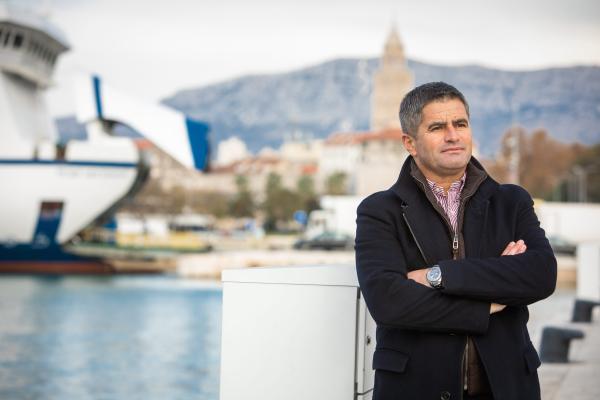
Can you briefly tell us about the Port of Split and the Port of Split Authority? What are the main characteristics and challenges? How is the Port governed? What is the role of the Port Authority?
The Port of Split Authority is a non-profit legal entity established by the Government to operate, construct and use the Port of Split, a port of special (international) economic interest for the Republic of Croatia. There are six functionally different port basins: the City Port Basin, and Kaštela D Basin are used for passenger traffic. The Vranjic-Solin basin and the Kaštela B and C basins are used for cargo traffic. Once the new infrastructure is constructed, the Komiža Basin will be used as a fisheries port. The Port of Split is the most significant transport hub connecting Central Dalmatian islands to the mainland. The connection with Port of Split is a prerequisite for maintaining the economy, quality of life and development on Brač, Hvar, Šolta, Vis, Lastovo, Korčula and Drvenik Veli and Mali islands. Around 45 000 inhabitants of these islands are connected to the mainland exclusively or predominantly through the Port of Split.
The Port of Split is the largest passenger port in Croatia and one of the EU's twenty-largest ports. The Port of Split's main problem is coping with the large volume of traffic when loading and unloading vehicles in the peak summer months when the traffic is at its highest point. Almost forty per cent of passenger traffic is handled in July and August, while nearly two-thirds of annual passenger and vehicle traffic is dealt with from June to September. Traffic jams near the City Port Basin in the centre of Split have been a significant cause of inconvenience for local citizens, passengers and tourists. The traffic jams are not primarily due to the traffic infrastructure in the port area. However, the Port of Split Authority has mitigated the challenges caused by traffic growth by significantly investing in port infrastructure, more than doubling the operational area. Two decades ago, the operating area in the city basin of the Port of Split, the largest port basin, was approximately 20,000 square meters. However, the current operating area is 44,000 square meters. This was done without requiring a single complete reconstruction of the port infrastructure. Instead, the port infrastructure improvements were made gradually to avoid disrupting traffic flow.
What is your long-term vision for Split Port Authority?
The Port of Split Authority aims to provide the best possible port service for connecting the Central Dalmatian islands to the Croatian mainland throughout the year. The critical challenge is to coordinate our efforts to raise the level of service with the local, regional, national, and cross-border stakeholders and to play a responsible role in the community by participating in the smart and sustainable development of Split and the region. The goal is that by introducing new technologies, the Port of Split will become a smart and sustainable port.
What are the main investment projects for the coming years? Could you briefly describe the importance of these investment projects for the Port and the city?
The projects prepared by the Port of Split Authority will significantly reduce waiting time and travel distance for cargo and passenger vehicles and thus contribute considerably to sustainable intermodal passenger transport.
The Project of reconstruction and expansion of the Northern Port in the area of the Vranjic-Solin Basin in the Stinice area, led by the Port of Split Authority, envisages the growth of the port infrastructure of the Vranjic-Solin Basin, which would significantly shorten the road route and shift the transport of trucks at least partly by ferries. The Project aims to build a new operational coast for transporting trucks with deliveries to the islands and back, moving them from the port basin in the centre of Split. Six new RoRo berths and an additional berth will be constructed in the Stinice area, enabling the Port of Split Authority to load and unload cargo trucks for the islands.
This Project will help to avoid congestion in the Split City Port Basin by diverting more than a third of the traffic to and from the City Port Basin to Stinice. This Project will shorten the waiting time for passenger vehicles boarding and disembarking, speeding up the traffic of these vehicles in Split and reducing their engine idling time. The Government of the Republic of Croatia declared the Project a strategic investment project. The estimated value of the Project is €48 million. It will be co-financed by EU funds.
To enhance the flow of passengers and vehicles in the City Port Basin, in the area west of the entrance to the "outer berths" next to the breakwater, a new international Passenger Terminal in the City Port Basin will be built. The Project will involve demolishing existing buildings and building new one. Some prominent public and traffic facilities, such as the Schengen border crossing, will be moved there. Many of these are located at St. Dominus Berth in the City Port Basin in the Maritime and Passenger Terminal building. The Pier of St. Dominus operating area, of about 14,000 square metres, could be used for local rather than international traffic. Thus, the Project will reduce vehicle waiting times by increasing traffic flow, resulting in less engine idling. The estimated value of the Project is €16 million. It will be co-financed by the EU funds.
The Project of the reconstruction and expansion of St. Peter's Pier in the City Port Basin is currently being prepared. The Project involves increasing the operational area by 5,350 square metres and adding two RoRo ramps for ferries at St. Peter's Berth from the north side, bringing the total to five. There will be two berths of hundred meters, while other berths will be 108 meters, 147 meters and 188 meters long. There will be five ramps, and one will be thirty meters wide, while the others will be twenty meters wide. This will help streamline vehicle traffic in the City Port Basin in Split and reduce vehicle waiting times and fuel consumption. The Project's expected cost is approximately €20 million, which will be co-financed by EU funds.
The Maritime and Passenger Terminal Resnik-Divulje in the port area of Kaštela D Basin - Resnik near Split Airport will enhance current infrastructure and will be used for high-speed lines such as catamarans for passengers arriving at or departing from the Split Airport, relieving road traffic by transferring it to the sea, contributing to the fuel and time savings, and consequently greenhouse gas emissions. In Resnik, there are forty metres of the coast, and after the implementation of the Project, there will be 198 metres of operational coast. Currently, there is one berth for catamarans, while there will be four after the completion of construction. The estimated cost of the Project is €3.5 million. It is co-financed from EU funds.
Last but not least, we have prepared the Project of construction of a fisheries port in Komiža on the island of Vis, worth €11 million.
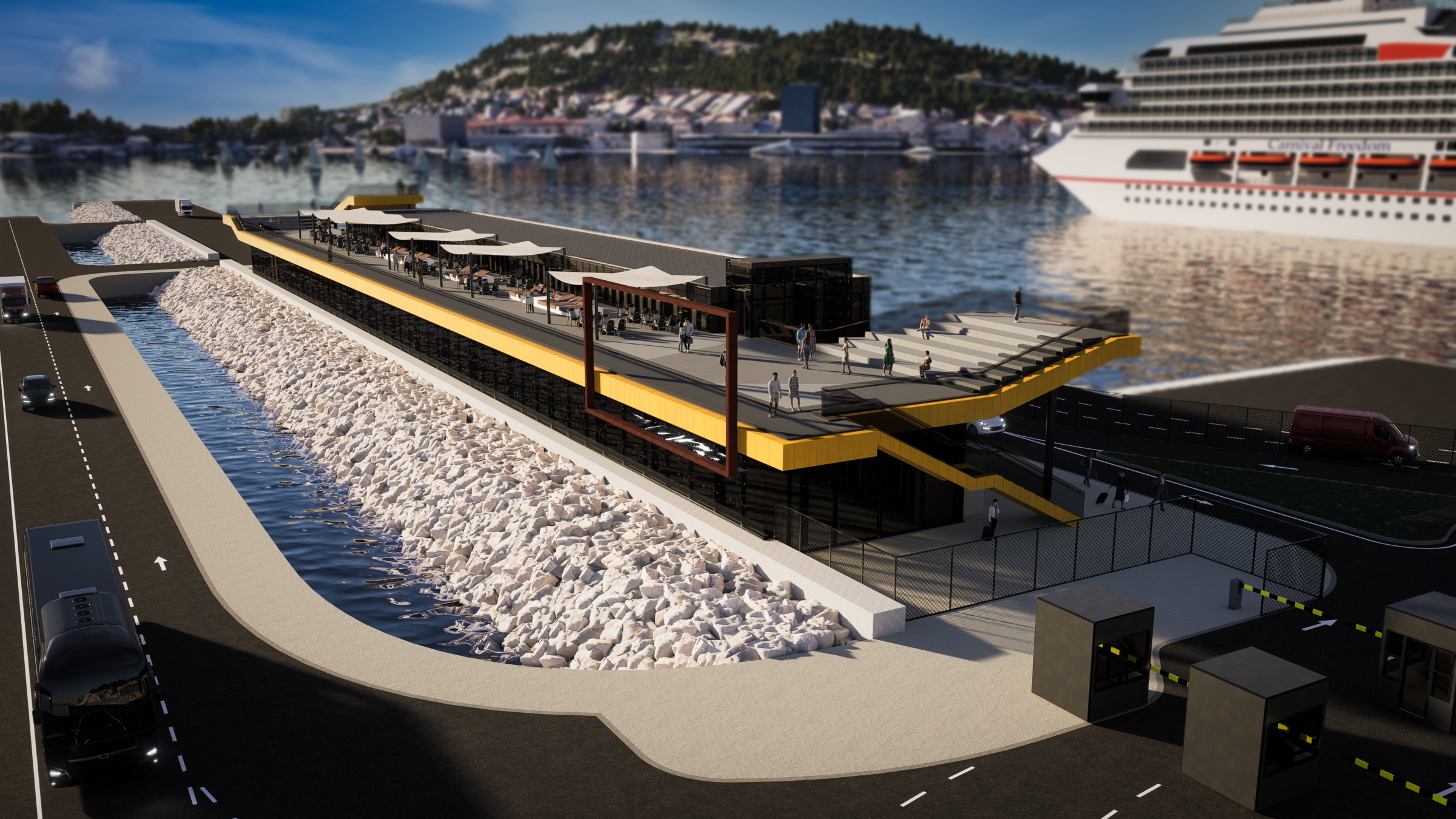
Passengers, both cruise and ferry, is a core activity for Split Port Authority. How do you see this business evolving in the coming years? What are the greatest challenges?
Over the past two decades, the Port has experienced tremendous growth, with passenger traffic more than tripling, significantly impacting tourism and the region's economy. The passenger traffic grew to 5.6 million annually in 2019, while in 2022, it was 5.3 million. Vehicle traffic has more than doubled in two decades and now stands at 916 thousand vehicles per year passing through the Port, surpassing 2019, the peak year before the COVID-19 crisis. The growth trend has averaged five per cent per year in recent years and is expected to remain in this range. With cruise ship traffic, our record year was 2019 with 360 thousand passengers, while there were around 280 thousand passengers last year. We expect a rapid recovery of cruise ship traffic to continue.
Do you consider the other Adriatic ports as competitors, or are you working a lot together?
We do not see the other Adriatic ports as competitors, but as partners because our shared goal is to contribute to sustainable development through efforts in the maritime traffic sector.
You have been involved in different European projects. Which recent ones were the most important?
We recently completed the expansion of the Eastern Coast of the City Port Basin by moving the coastal line with a length of 260 meters, approximately 5.5 m towards the sea, so that now it is 9.5 meters wide instead of four meters, which allows for optimal catamaran berthing facilities and expansion of the passenger corridor. The Project was worth around €5 million and co-financed by EU funds. We have also recently completed a modern fisheries port in Brižine, worth about €6 million and co-financed by EU funds.
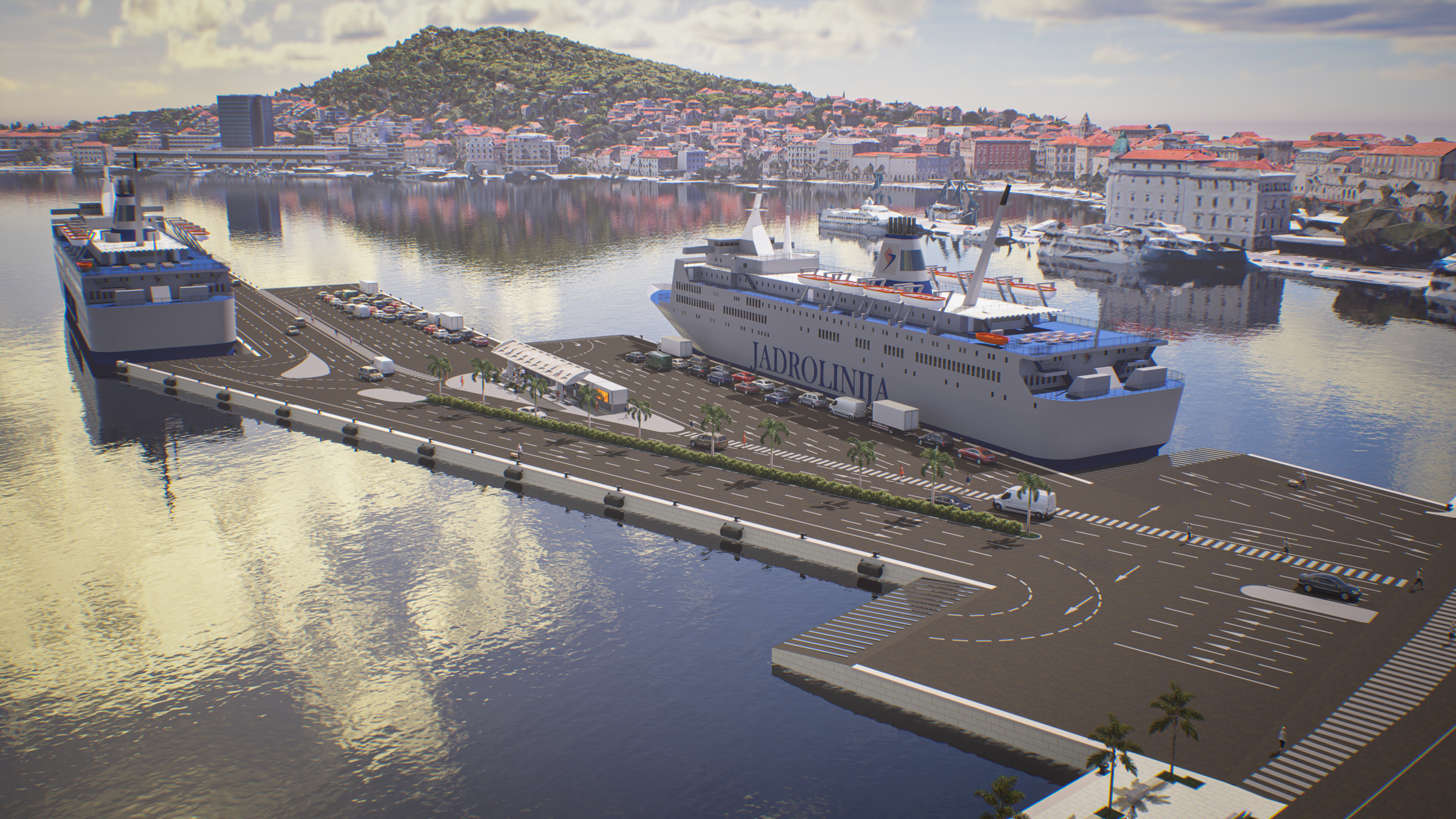
By 2030 all TEN-T ports will have to equip their cruise, ferry and container terminals with onshore power supply (OPS)? Is this a challenge for Split, are you already implementing OPS or starting with the implementation? How do you see the financing of these investments?
We have been actively seeking solutions by considering specific locations, infrastructural development and available space in our six port basins and the nearby areas. For instance, in the reconstruction and extension of the St. Peter's Pier project, the design will include room for electrical equipment for the supply of the ships to be installed. However, significant coordination with stakeholders is required, from shipping companies and concessionaires to an electrical supply public company and local, regional and national authorities. We expect support from the EU funds and the State to finance such significant investments.
The greening of a port is a task which requires the help of all port stakeholders. What can a port authority do to engage all stakeholders in making their operations more sustainable? What role can Split Port Authority play in decarbonising the logistic chain?
The major stakeholders in our Port have been made aware of the necessity to make the Port more sustainable. Through our Environmental Management System, we aim to create a comprehensive tool for managing and reducing negative environmental impact to achieve emissions reduction, fully sustainable waste management, optimal energy consumption with little ecological footprint by switching to renewables as much as possible, noise reduction and other negative impacts on the environment, by including the necessary infrastructural requirements into our designs. In our prepared projects, we aim to implement sustainable intermodal transport, mainly from EU funds. Our major problem is road traffic congestion. Almost one million vehicles, including more than 200 hundred thousand trucks, pass through our central passenger basin, the City Port Basin, in the centre of Split. The Port of Split Authority projects will contribute to protecting the environment by moving traffic from the roads to the sea and thus reducing emissions by less fuel consumption and time savings in traffic. For instance, constructing new port infrastructure in Resnik would enable shorter passenger traffic routes from the Split Airport, with an impressive 2.9 million passengers in 2022, to the City Port Basin in the centre of Split and the islands by shifting some traffic from the road. The new infrastructure in Stinice would result in a seven-nautical mile longer sea route for RoRo vessels transporting trucks to and from the islands. On the other hand, the three kilometers shorter road route for trucks to Stinice compared to the road route to the City Port Basin more than offsets the higher fuel consumption of the RoRo vessels.
European ports are increasingly investing in digital solutions to improve the efficiency of the logistics chain and port operations. Has Split Port Authority taken any initiatives towards digitalisation?
While we focus on the remaining infrastructural round-up of the Port, we have been increasingly working towards port digitalisation to make the Port of Split a smart port. We have mainly done that through EU-funded projects, especially cross-border cooperation ones. While we have already implemented some of them, we have also applied them on recent calls with our partners from Croatia and neighbouring countries. Our digitalisation activities focus on safety and security, including cyber security, information gathering, analysis, and waste management.
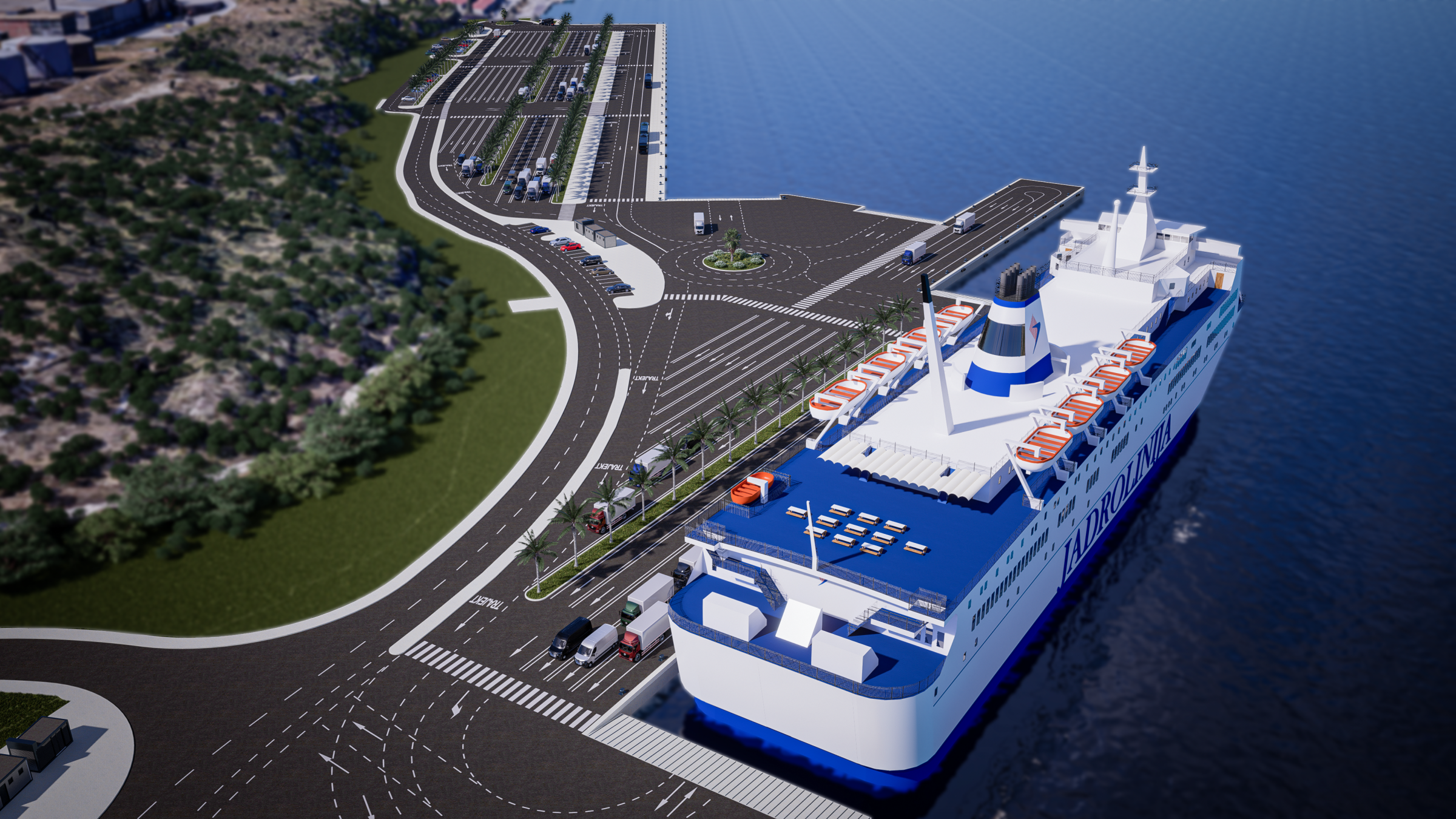
Your project "Adrijo" was shortlisted at the ESPO Award 2022, which focused on the "role of maritime passenger transport in enhancing the city connectivity and bringing added value to the local community". Could you tell us more about this cross-border cooperation initiative?
The ADRIJO platform is an innovative and already available tool that makes it possible to achieve the goals of the network because it brings together the virtual museums of the eight Italian and Croatian ports – Ancona, Ravenna, Venice, Trieste, Rijeka, Zadar, Split, and Dubrovnik – through an interactive digital portal. At the same time, the ADRIJO platform is a tool for promoting port-city relations and valorising each Port's cultures, stories and knowledge.
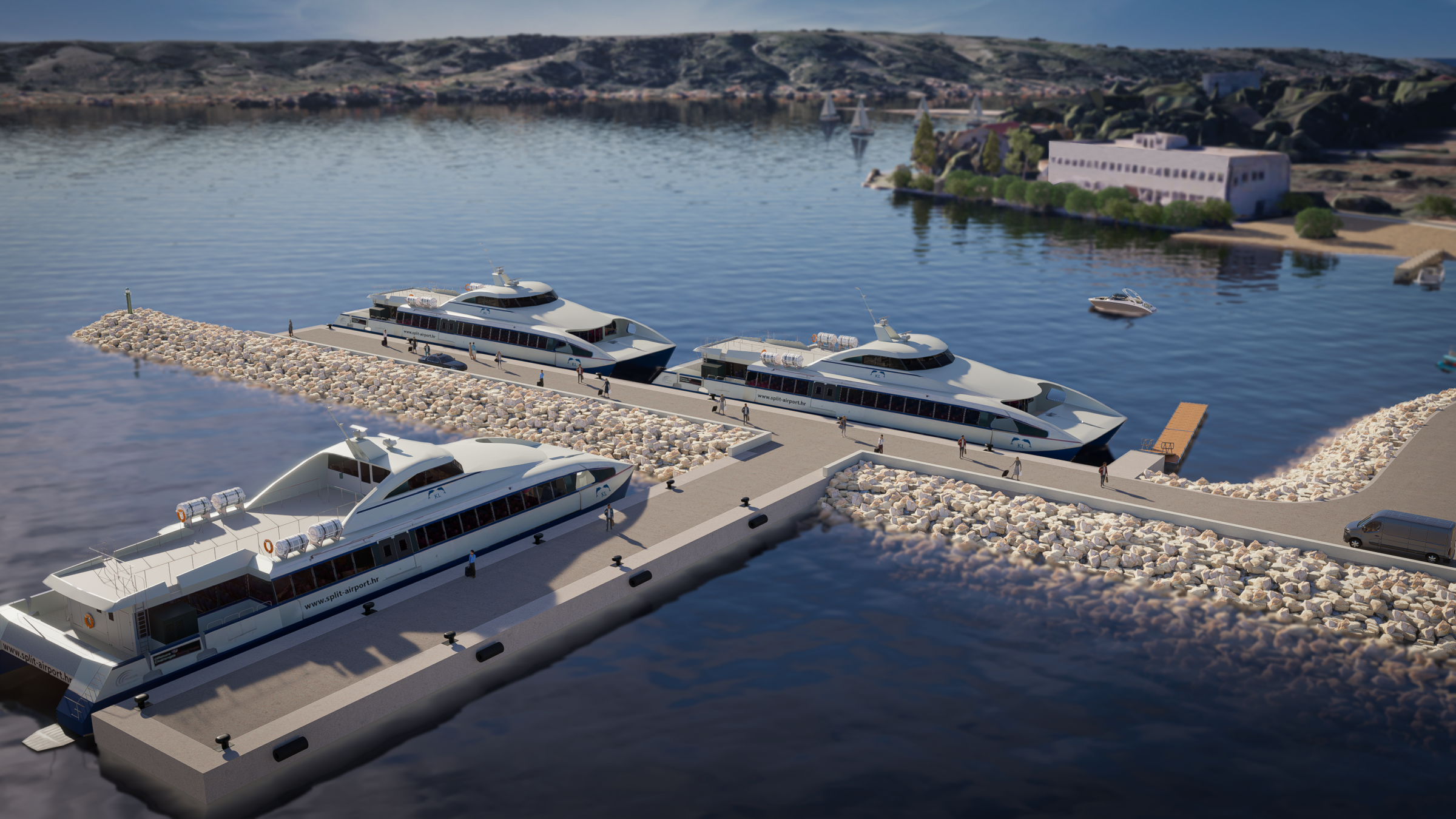
Split Port Authority is a full member of ESPO since the accession of Croatia to the EU in 2013. What is the added value of being part of an organisation like ESPO?
ESPO greatly helps the Port of Split and other Croatian ports from the Croatian Port Authorities Association by sharing best practice examples in European ports. My colleagues from the Port of Split Authority Milan Blaževski, Josipa Bukarica and Goran Kotur actively participate in the ESPO activities as members of the General Assembly, Port Governance and Management Committee and Sustainable Development Committee. On the other hand, we contribute to ESPO's intensive and successful efforts to represent European ports in communication with the EU institutions. We have been actively cooperating with ESPO on environmental issues, including preparing for PERS certification of our environmental management system.
How did you get into maritime transport? How did your career path lead to this position?
I have been at the Port of Split Authority for 25 years. At first, I was in the Port Operational Centre. Then I became the Operations Coordinator, and after that, I became the Head of the Port Operational Centre. Before becoming Managing Director, I spent a decade as the Head of Commercial - Operational Sector. Over the years, I gained valuable all-round knowledge of port operations and experience.
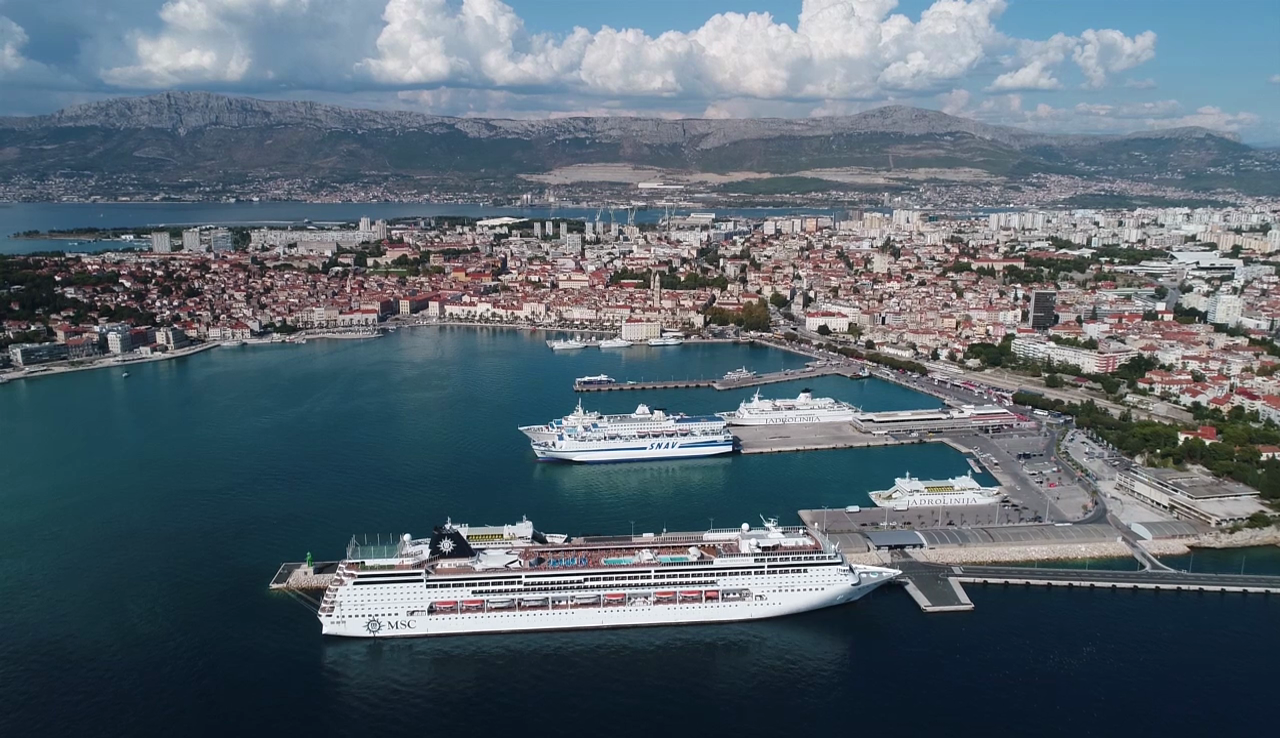
Related documents
No attachments.

